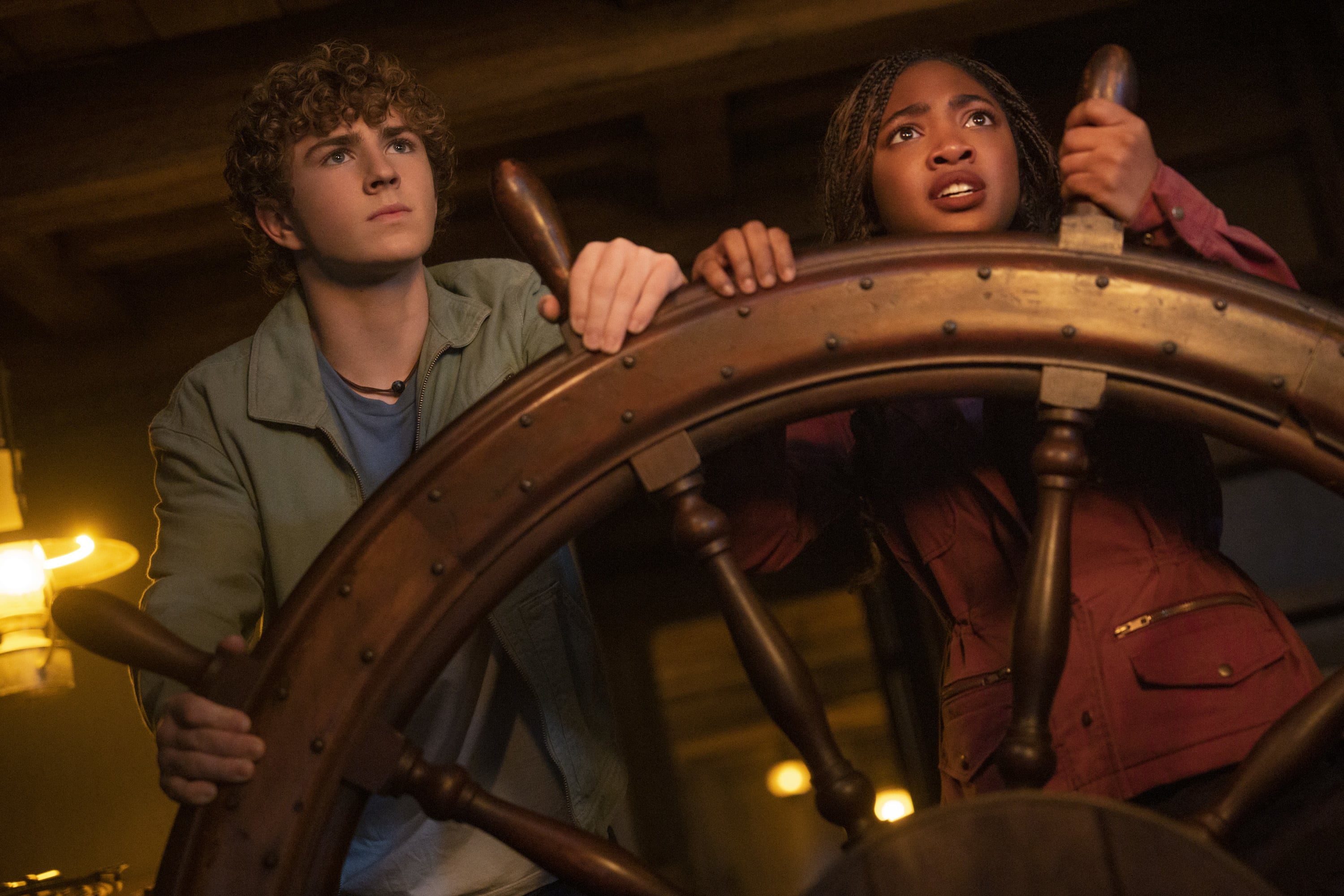The road between Ballinamore and Enniskillen runs flush through the region that Fáilte Ireland has optimistically and accurately signposted as Ireland’s Hidden Heartland. It is lush and secretive and seldom features on the glossy tourist brochures: a gorgeous interior waiting to be discovered. Throughout the school year, buses have carried students along the quiet road for return visits between Ballinamore Community School and the Royal Grammar, which sits on a promontory in Portora in Enniskillen.
“I didn’t know Ballinamore existed,” jokes Annie Fowler of her first visit to the Leitrim town.
“I’ve always heard stories of the Troubles. I thought I knew more than I did but I’ve learned a lot from this trip.”
Sitting beside her, Niamh Christy says that shopping trips across to Enniskillen are a regular part of her life in Ballinamore. “I’ve been to Enniskillen a lot. I like it.”
READ MORE
Even during the worst of the Troubles, the Border roads of north Leitrim and south Fermanagh were more fluid than most. The writer John McGahern, whose grave in Aughawillan cemetery is a short, uphill drive outside Ballinamore, regularly crossed the Border to Enniskillen.
His essay Blakes of the Hollow is a celebration of the famous pub on Church Street, which he describes as “one of the happiest and most beautiful bars in the whole of Ireland”. In the 1970s, when the Republic was affected by a long postal strike, Donal Blake invited McGahern to use the pub address for his mail.
“Twice a week we’d go to Enniskillen to post letters and collect our mail in Blakes. I became a regular among the regulars.” For obvious reasons, Blakes was not included in the local sights the transition year students from both schools visited during the terms when, over co-ordinated hours, they acquired a steady understanding of what it’s like on the other side of the Border and across Ulster in general.
Many students from both schools had never visited Belfast, and shared their thoughts on the project visit to the city, which included stops at republican and unionist memorials and to hear former paramilitaries from both sides speaking about their experiences.
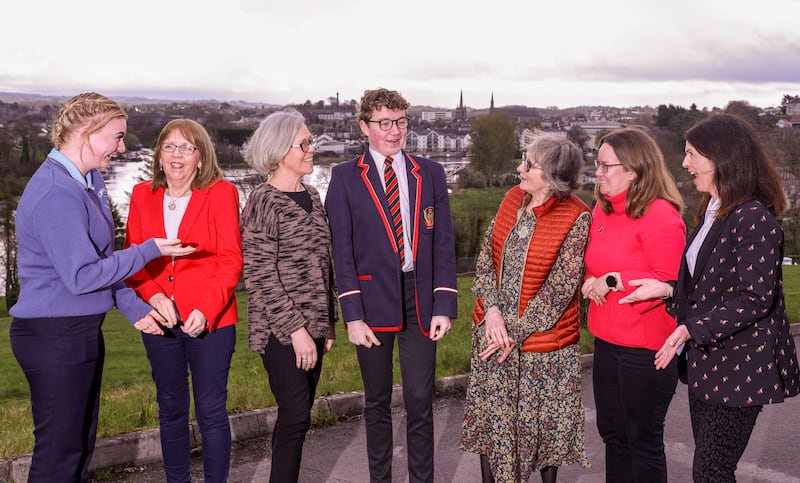
“They told us at the end that both had different truths. But they are their truths,” says Fowler.
In a month when the island has been gazing back on the 25 fast years since the Belfast Agreement, it takes imagination for a group of students not then born to place themselves in the mindset of the waning era of paramilitarism and terror.
“I think you can see why,” says Barry Hutchinson, a Royal Grammar student.
“It can be difficult to think of why they committed these acts. Living in peace, it is easy to just see them as terrorists. The older generations would have more of a link to them. I don’t have any links to any of the people who participated in paramilitary organisations so, yeah, I just brand them as terrorists. But it is harder, then, when they are there in front of you and when you have a personal connection, to dismiss them as the same as… Isis or any other group like that.”
Barry’s experience of both sides of the Border is unusual in that his mother grew up in the Republic and is a Catholic. “My father went to school here,” he says of the Royal Grammar.
“They met at university and when they married, that was not the norm. It wasn’t usual to have a mixed-marriage, as my father calls them. I think I was pretty aware of the history. He tried to make us aware of it. He grew up in the 1990s, so he knew more about the end of the Troubles than the start. But he did try to make sure we knew that this was our history and that it was unacceptable what happened.”
That was part of the reason behind this project. It came about when Máirín Martin, who grew up in the Fermanagh village of Teemore and who now lives in Ballinamore, began thinking about the subconscious barriers that shaped her adolescence.
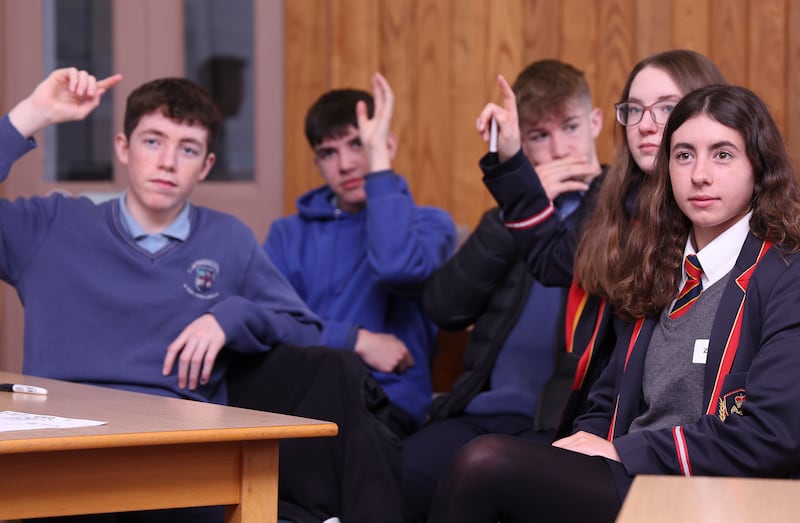
From her home, she was separated from Co Cavan only by the road, a field and a small river. She also went to school in Enniskillen, to Mount Lourdes Grammar. “They used to tease me about my southern accent. But I always felt welcome.” The Lourdes girls knew the Portora students from the distinctive black and gold uniforms they wore then. But they moved through the same streets while existing in entirely different worlds.
“We never went near each other. And it was probably after Good Friday that I began to realise that the biggest problem was the division of schools. Apart from anything, the uniforms made targets of students from both sides. I’d never even been in a Protestant church until I came to Ballinamore.”
When Martin reflects on her school experience, she is struck by how normal the everyday strangeness of it seemed. She took the school bus into Enniskillen but, because UDR men often drove those buses, they were frequently targeted. Over time, the pick-up and drop-off locations moved further and further away from Teemore: it was too dangerous for the drivers. Eventually, she just stayed with her relatives in Enniskillen during term time.
When her friends began to socialise, they always gravitated to Ballyconnell or Ballinamore. It wasn’t until she moved to Leitrim that she began to frame her formative experiences with the clarity of distance. Ballinamore to Teemore is just a half-hour drive. But it meant passing into a separate sphere of life experience.
“Even my husband, when we started going out, it was the height of the Troubles. His parents were horrified that there were 26 counties and he had to find a woman on the other side of the Border,” she laughs.
“It was an unapproved road that he came across. And the IRA would have blown the road up because they’d be expecting an army patrol. I remember one night actually standing out in the front garden of the house and seeing the shooting going on. You could see the guns going across the Border between the British army and the IRA. It is only recently that I have begun to think that we all needed some kind of counselling because we took this as a norm.”
So, it is quite something now for Máirín Martin to sit in the classroom of the Royal Grammar on a sparkling, sunny school morning to listen to students from both places talk about their recent trip to Belfast. Anne Donnelly, who facilitates the conversation, does not attempt to guide the students in any direction. Rather, she just asks pertinent questions that have a miraculous knack of generating unselfconscious discussion.
What images stayed in your head? What stories stayed with you? What did you think of the memorials? What capacity do you have to listen to someone you disagree with?
The conversation flares in unexpected directions. “It was cool that you got to write your name on it,” someone volunteers of the Peace Wall. Or, on a Royal Grammar perspective of Ballinamore Garda station: “Small. You could walk into it like it was a house.” Or on queries of distinguished visitors to the steadfastly republican Leitrim town: “No. Queen Elizabeth never visited Ballinamore.”
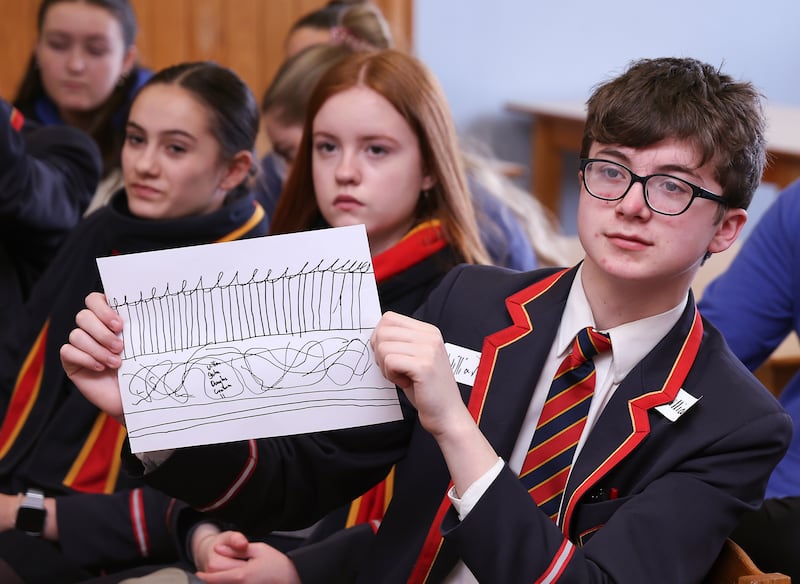
In one sense, the fact that the conversation is taking place is proof of just how far this Border region has travelled. Figures like Seán MacDiarmada and Bobby Sands come up in conversation.
The Royal Grammar school building has an unusually rich history. Since 1778, it served as Portora Royal, which itself was founded in 1618. The Royal Grammar, founded in 2016, is a result of an amalgamation between Portora and Collegiate Grammar. It is a co-educational, non-denominational day school with the aim of serving “a community at ease with itself and at ease within its wider communities”.
It’s a handsome sandstone building with a commanding view of the Erne town. Blue plaques on the front of the school honour the presence of two of its most famous past pupils, Oscar Wilde and Samuel Beckett. Later, Elizabeth Armstrong, the principal, shows me around and we stop at the memorials for former students who were killed in the first World War, the second World War, the Boer War and during the Troubles. Combined, the number of those killed would fill a class in its own right. In atmosphere and story, the school belongs to a specific tradition.
The Belfast trip was the culmination of several terms of meetings and visits between the schools. First, they visited more local spots. They stopped at the monument for John Joe McGirl, the locally feted republican who died in 1988 and whose memorial is still a touchstone for republican and Sinn Féin commemorations.
[ Sinn Féin under pressure to clarify dealings with Dowdall prior to electionOpens in new window ]
“They were maybe a little confused or surprised that there was a memorial there,” says Michael Mullin, the overall project co-ordinator for Better Together, which runs a series of community-linked projects.
“And similarly in explaining the Enniskillen bombing and memorial, it maybe challenged their own narratives or beliefs, which I found really interesting.”
Colm McLoughlin, another Ballinamore student, is well-acquainted with McGirl’s generation. “My nan grew up in Aughawillan and she would have told me about the stories.” And, like most teenagers in Ballinamore, Niamh Christy knew anecdotally of McGirl but through her participation in the project, she stopped to consider the political tradition of her hometown.
“I didn’t know how many connections there were to Ballinamore which is probably a bad thing because I have lived there all my life. And there are loads of signs and memorials in Ballinamore and I don’t think I ever stopped to fully read them. I walked by them 20 times a day. It did change me. I always knew that Ballinamore had a few big figures in the IRA – like John Joe McGirl, and he was very respected in the area. But I never would have thought that Ballinamore would have had such a big involvement in Enniskillen because you probably only hear about the northern side of things and how they were blowing up things – sorry! But I knew that it wasn’t one-sided because we were so close to the Border. I think, at that time, you nearly had to be on one side or the other. Say like my grandparents, they were up in the North all the time. But weren’t really on any side. And they said you’d be kind of pressured to join the side where you grew up. They would have been the same age as John Joe McGirl and would have been pressured to have the same views of that group in Ballinamore.”
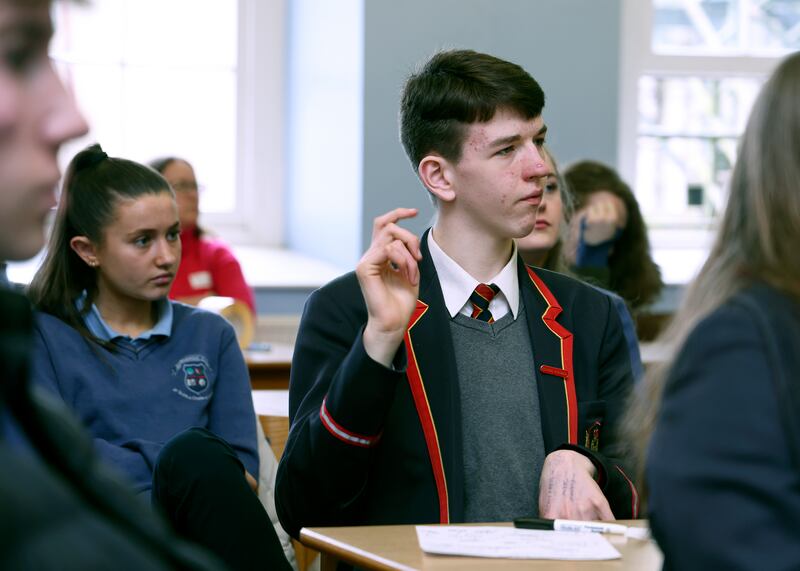
After Máirín Martin made her application for a cross-Border schools project to the International Fund for Ireland, she found herself selected among a group of 16 people invited to travel to El Paso and Washington as part of a study visit on Border communities. Among the group was a prominent Police Service of Northern Ireland officer.
“Growing up, the RUC were in jeeps. You would never see them out and we would never have spoken to an RUC man. So I said to him: this is new to me. And we had a huge, long debate about his beliefs and my beliefs and where we came from. And we are really good friends now. So I invited him up here to Ballinamore to the launch of the project in September. And he was the first PSNI officer in the history of the State to speak publicly in Ballinamore. And of course, I missed it. I had Covid.”
On one level, the entire project could be categorised as a pleasant endeavour between two groups of school students, who get to visit the peace line rather than having their lives defined by it. But, given the tortured processes of “dialogue” that continue to dominate the evening headlines, and with the question of a united Ireland sharpening, it does seem like an informal triumph to see a group of teenagers from divergent backgrounds talking and laughing in a classroom.
Not so many decades ago, that simple act would have been unimaginable. Máirín Martin admits she is thrilled. The students have begun to communicate more casually, through social media. Maybe they will stay friends as they move beyond school. What is clear is that they are all looking at the smoke and statues of previous decades while moving the other way.
“I am definitely optimistic for the future,” says Barry Hutchinson.
“And if you think about the fact that none of us were raised in a violent environment, that helps. We still live on the same island and if you think about how much more international and globalised the world has become in the last 30 years, that definitely helps how I see myself in the context of say, Europe, rather than Northern Ireland. I think the future is definitely more positive and I don’t think it will ever go back to the Troubles. Hopefully not.”


